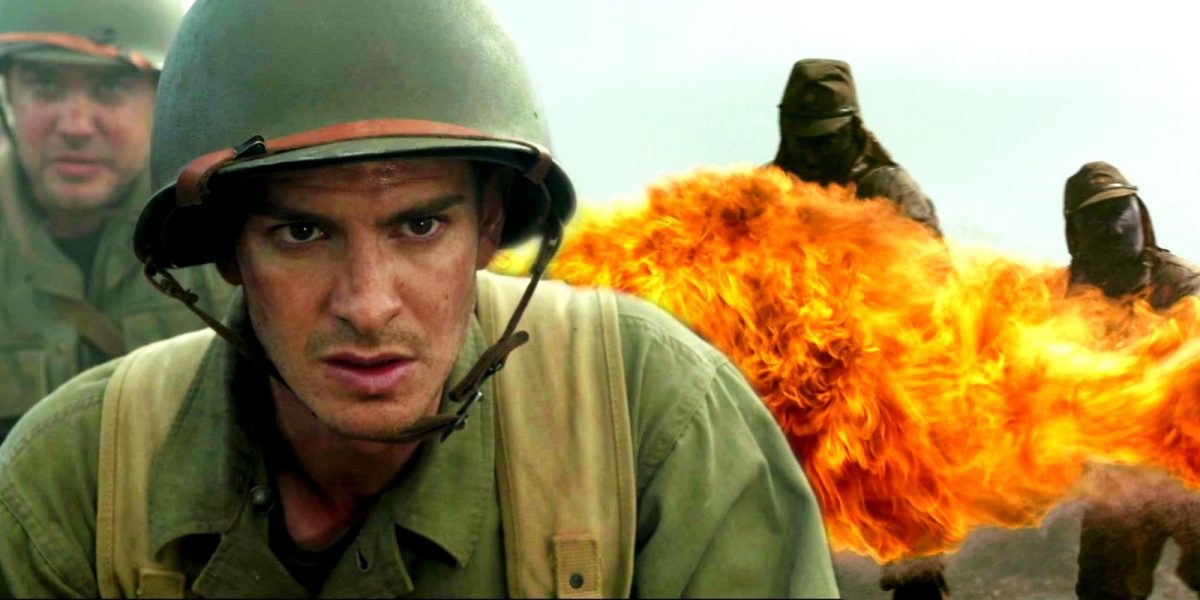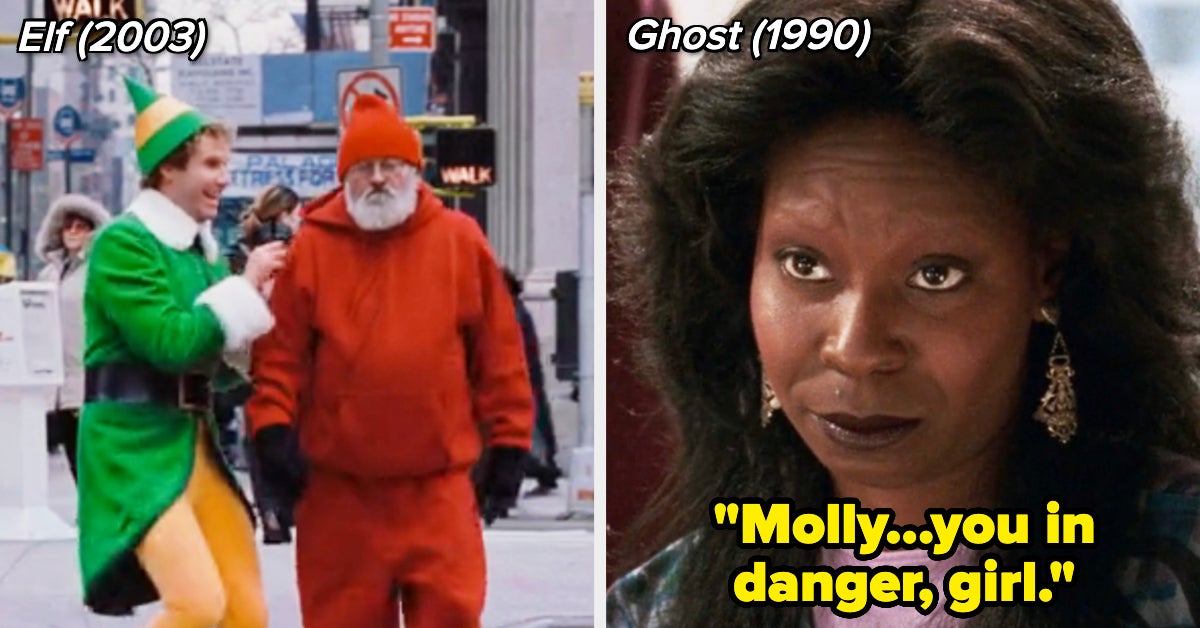
Andrew Garfield’s Anti-War Movie Hailed By WW2 Expert, 7 Years Later
Jun 20, 2023
Andrew Garfield’s anti-war film Hacksaw Ridge gets praise from a World War 2 expert. Based on a true story, Hacksaw Ridge tells the story of pacifist Desmond Doss (Garfield). Despite joining the war efforts during World War 2, Doss refuses to kill, claiming that his devout Seventh-day Adventist religion prevented him from doing so. Hacksaw Ridge was well-received upon its 2016 release and received six Oscars nominations, including Best Picture and Best Actor for Garfield.
SCREENRANT VIDEO OF THE DAYSCROLL TO CONTINUE WITH CONTENT
World War 2 historian James Holland breaks down Hacksaw Ridge for its historical accuracy in an analysis with Penguin Books UK. Highlighting various elements of the movie’s battle sequences, Holland first pointed out that the Japanese battle tactics–charging at their enemy and yelling–were “spot on.” He also mentioned that the weapons depicted, including flamethrowers and spud guns, closely matched those that were used in WW2. Overall, Holland praised the movie’s historical accuracy and cinematography in depicting the realities of World War 2 battles in Japan. Read his detailed analysis and watch the video below:
Lots of Japanese soldiers yelling and charging manically at the enemy. That’s what they did over and over and over again, and one of the extraordinary things about the Japanese in the Second World War is they never really amended their tactics. They had their tactics, these sort of banzai charges, where you would just charge at the enemy, intimidate them, cut them down. What would happen is the Japanese would retreat into these sort of mountainsides, where they’d have these absolute sort of, you know, honeycomb, labyrinth bunker system, which made it very, very hard to win on, you know, islands like Peleliu and Hiroshima and Okinawa, and so on. But charging crazily at the enemy, that was absolutely what the Japanese did, and all the kit and everything they’re wearing looked spot on to me.
And lots of flamethrowers and that’s one of the ways, how you get the Japanese out. What you’d have to do is you’d have to try and get as close as you could to the entrance of these dugouts and so on, and then you’d kind of go in with the flamethrower.
So, there’s a little clip of a guy using a submachine gun. That was what was known as the spud gun, like the old gangster Tommy gun of Al Capone and all the rest of it, and these fire around 30 rounds. You know, it takes about sort of three or four seconds to get through them, something like that. The Americans had the Tommy gun, which they were issued with, and they also had later on in the war, they had the spud gun. Now, it’s just a bit smaller. It’s much cheaper to make, it’s lighter. It’s a bit like the British STEN gun, very rudimentary, very basic, but you’re using these weapons at kind of 20 yards, 25 yards max. Any much further than that, they lose any sense of accuracy, but since this is close-quarter fighting, that’s why they’re using them. So, this guy using that spud gun in this particular clip, that’s perfect.
I think what’s been very well depicted here is the absolute insane levels of violence that you got. For the most part, a lot of engagements in the Second World War in the Western theatre weren’t particularly close quarters. You know, really, really small places, and it is absolutely up close, personal, incredibly violent, and this is conveying that, I think, very effectively.
And what we’ve just seen there is the heavy naval guns firing, and of course, that was one of the advantages that the allies, the Americans particularly, had… lots and lost of warships off the coast at any of these invasions. You’re just simply not going to land unless you’ve got control of the seas immediately around you, and what that gives you is immense firepower because these 14 inch, 16 in, even 10 inch, eight inch guns, they’re absolutely enormous, and they can hurtle shells of enormous weight in calibre… 12, 15, 16, 20 miles, I mean really decent ranges. And so much of the time, the guys on the ground are within range of offshrore naval guns, and that gives you huge amount of very heavy firepowe, which you can use to augment what you’re doing on the ground.
I’d give it eight for both for accuracy and for excitement. I mean, it was a powerful part of cinematography. Everything looked right to me. The close quarter-nature of it, use of offshore naval guns, the grime, the dirt, the kind of unbelievable ultra-violence, the banzai charge, all that was in keeping with the reality. I mean, it must have been absolutely, completely terrifying.
Hacksaw Ridge Is Both A Cinematic & Historical Wonder For A World War II Movie
Holland’s assessment of Hacksaw Ridge does not go unfounded since the movie became critically acclaimed for its brutal and violent depiction of war. While some research was likely required to build the production set, costumes, and props to accurately illustrate the war nature, director Mel Gibson revealed that several battle images were based upon his childhood nightmares since his father, who was a World War II veteran serving in the Pacific side, told him the horrific accounts as bedtime stories.
RELATED: 10 Most Historically Accurate War Movies
Following its release, Hacksaw Ridge joined the list of exemplified and cinematic war movies that continue to be discussed in the mainstream. The anti-war film contains visionary scenes, such as the soldiers’ first look at the daunting ridge above and the climactic battle where Desmond retrieves the last survivors. Like any war film, some creativity was likely involved in setting up the scenes, but even the battle sequences are well-edited to the point of eliciting strong reactions from the audience. Due to its dedication and precision in the technical areas, it won Oscar categories in Best Editing and Best Sound Mixing.
Holland’s insight further adds value to the quality of Hacksaw Ridge. From the costumes to the weapons, Hacksaw Ridge’s realism seemingly contributes to its emotional arc. Its graphic violence is not for the shock factor, but rather, the real environment behind the film was violent, and the film attempts to do that justice in adherence to that truth. Even seven years later, Hacksaw Ridge’s accuracy still impresses historians.
Source: Penguin Books UK
Publisher: Source link
Lana Del Rey Makes Rare Comments About Husband
@varietymagazine Lana Del Rey says Jack Antonoff is a "big reason why I waited so long to get married and why I met my amazing husband. And I really feel like there's kind of a singer's curse around meeting an…
Dec 12, 2024
OnlyFans Model Lily Phillips Has Sex With 100 Men In One Day
OnlyFans Influencer Lily Phillips Breaks Down in Tears After Sleeping With 100 Men in One DayHaving sex with 100 men in a single day was not what OnlyFans model Lily Phillips expected it to be. After offering her male fans…
Dec 12, 2024
19 Movies Scenes That Were Improvised By Actors On Set
To celebrate the movie's 30th anniversary in 2023, director Chris Columbus discussed Robin's genius improv on the Mrs. Doubtfire set, saying they had to have four cameras going at once to be sure to catch his unscripted moments.In an interview with…
Dec 11, 2024
Hailee Steinfeld’s Fiancé Josh Allen Wins Over Her Brother at NFL Game
Josh Allen is scoring some points with his soon-to-be brother-in-law. Hailee Steinfeld’s car enthusiast brother Griffin Steinfeld shared footage of his winning bond with her fiancé as they both visited SoFi Stadium for the Buffalo Bills game against the Los…
Dec 11, 2024











